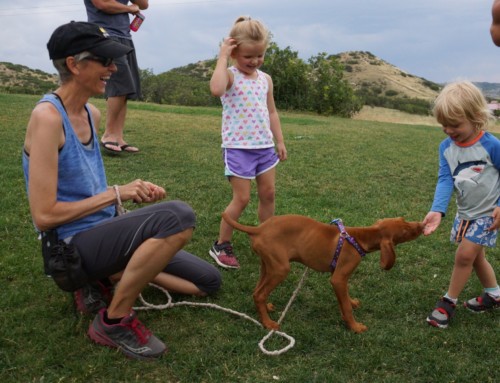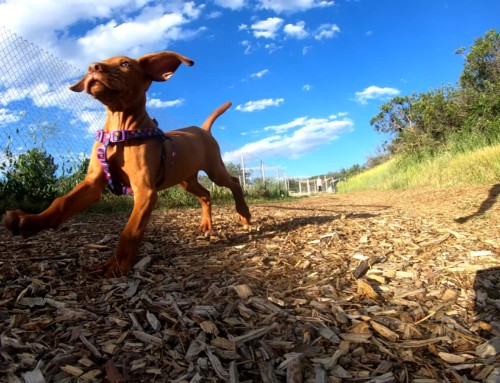DOG TRAINING OFFERED IN-PERSON AND ONLINEOur dog training services are delivered in almost any format that meets your needs. We have GROUP CLASSES at our indoor and outdoor facilities on our farm, ONLINE LIVE STREAMING classes, and SELF-PACED VIDEO-BASED training through our Online Dog Training Course. Our PRIVATE TRAININGS can be done in-home, outside, in public dog-friendly locations, at our facility on our farm, online via phone or video conferencing and through email. |
We often recommend using meals for training. This helps us to minimize the treats we use, reduce the overall amount of food we give to avoid unwanted weight gain, and also helps us focus on a better balanced and nutritious diet for our dogs. However, for those of us who feed a raw diet, using meals for training sessions is not practical. So what do we do?
Raw diets are predominantly raw meats, which is what healthy dogs need to have optimal health. You probably do not want to be handling raw meat to use as treats, as you'd have to be washing your hands constantly between touching the treats and touching other things.
Instead, the next best option is to make sure your meat is cooked to a minimum internal temperature of 165 degrees. This can be achieved by cooking on the stove, in the oven, or in a dehydrator. These are pretty easy options available, as most of us have access to at least a stove or oven.
Stove and oven cooked meat still needs to be temperature controlled, so not a great option if you just want to grab treats to take with you for the day or leave out on your countertop.
Dehydrated meat may be OK, but you really have to make sure it is dehydrated properly so that it is shelf stable, especially if you want to leave your treats out in the open without risk of spoiling.
You could take raw meat and freeze dry it, but that requires some expensive equipment and lots of energy to freeze dry food. You also run the risk that even with freeze dried food, it is technically not cooked, so when you handle it, the moisture on your fingers could be activating the bacteria and enzymes on the meat and you are then back to the position where you have to be careful what you touch.
The next options are vegetables and fruits. You could do raw in this area quite easily. The problem is that if you are like us and are using micro-training sessions throughout your day with your dogs and frequently rewarding desirable behaviors with treats outside of regular meals, you run the risk of getting your dog imbalanced in terms of their nutritional intake if you overdo it with vegetables and fruits. The other consideration is finding vegetables and fruits that your dog likes enough to work for without being mixed with meat. For some dogs there are lots of options, for some not so many.
That is one reason why we developed our Peak Power Dog Treats, which are essentially dog food in the right proportions to mimic the optimal dog ancestral diet of meats, vegetables and fruits, and cooked so that we have much less to worry about in feeding them a lot of treats.
What we suggest to help maintain balance is to figure roughly that your treats should comprise 80% meat, 15% vegetables and 5% fruit. That does not mean that this 80-15-5 proportion offers the right nutritional balance for your dogs. There are lots of other ingredients in small amounts added to help get an optimal mix, which is what we do for our Peak Power Raw Dog Food. But this is a ballpark proportion you can use for treats.
So, you could cook a bunch of meat and by weight, add some vegetables and fruits to the mix to get that 80-15-5 balance, and put this mixture in your refrigerator with expectations to use it all up in 1 week. That way, over the course of the week, you maintain balance, whereas on individual days it might be imbalanced if you are feeding more vegetables one day over meat or fruit, for example.
In terms of specific foods, we like to use true grass fed beef and organic free range chicken. For vegetables and fruit, your choice may depend upon what your dog likes because by themselves, some dogs may not want to eat them. At the end of this article is our go to list that we use in our food and treats.
So if you are feeding a raw diet, you might not be able to use meals for training sessions, but you still have options for providing consistently healthy foods when training.

Our goal is to positively impact the lives of as many dogs and their families as we can, in part through our extensive library of video, infographics and text articles. 
|













Thanks for posting. The tongue is a muscle, not an organ, fyi.
In my research, the tongue can be considered both, just like the heart.
Sure. I’m certainly no expert but I would imagine that nutritionally speaking it should be considered a muscle since it’s something like 80% muscle. Just a thought when you’re calculating your ratios.